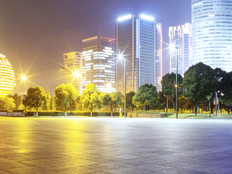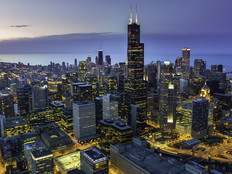The Internet of Things Drives Smart Transportation Projects
Editor's note: This article has been updated since its original publication to include additional relevant content.
From smart TVs and gaming consoles to connected appliances and environmental controls, the Internet of Things (IoT) has permeated everyday living. But the IoT is hardly limited to the home — the technology can also give city, county and state governments deeper insights into their use of infrastructure and services.
One of the largest upcoming projects is found in Chicago, where an Internet of Things platform will monitor pollution and vibration levels via Honeywell and Texas Instruments IoT sensors attached to streetlights.
At its intended scale of 500 citywide IoT sensor nodes, the partnership between Chicago, the University of Chicago and Argonne National Laboratory will constitute “the biggest network of sensors we know about,” says Rob Mitchum, communications manager for the University of Chicago’s Computation Institute.
The IoT platform will also transcend the city’s older, often unconnected sensors, says Brenna Berman, commissioner and CIO of the Chicago Department of Innovation and Technology.
“Publishing the data to the city's open-data portal will occur in almost real time,” she says. “Any department in the city will tell you that more precise data will lead to more precise planning.”
Chicago has the advantage of university and government grants, some pending, to cover the IoT deployment. Its operating costs: about a notebook’s worth of electricity per node.
While funding isn’t an issue, privacy concerns remain. To address those, Chicago and its partners are open-sourcing the the platform’s code and design and have promised to operate in full transparency.
Ruthbea Clarke, director of IDC’s Smart Cities Strategies program, calls the platform a good example of IoT utility, especially because the partners behind it have different experience levels.
“Not only can the cities not do it by themselves, the vendors can’t do it by themselves,” she says.
MORE FROM STATETECH: Find out how intelligent transportation systems save cities money.
Washington, D.C., Launches IoT Smart Parking Project
A similar IoT project in Washington, D.C., aims to ease the urban annoyance of parking.
The District Department of Transportation’s ParkDC project in downtown’s Penn Quarter and Chinatown neighborhoods yields real-time data on open curbside parking spaces and helps ensure parking availability by raising or lowering parking rates based on demand.
“The whole idea behind ParkDC is to make the process easier for the customer,” says Soumya Dey, director of research and technology transfer at DDOT.
Other cities have attempted similar projects, but Dey says DDOT’s “asset-light approach” trims costs.
Instead of planting vehicle sensors in every space (as San Francisco did in its SFpark pilot), DDOT combines data from fewer IoT sensors with usage reports from networked meters and mobile cameras to estimate block-level availability.
Along the way, the District will have to overcome people’s willingness to drive around the block to find a free or cheaper space.
“Where we’re talking about building a more robust data collection effort, we’re going to enable a more robust market,” said Kevin Webb, co-founder of the transportation planning firm Conveyal, which builds apps based on open data. “And that’s going to upset the current framework for pricing.”
How Smart Cities Gain Efficiencies from IoT Traffic Sensors
Smart cities that deploy IoT sensors for traffic management can gain significant benefits. Such sensors can have a large impact on improving traffic flows and reducing congestion and pollution, all of which improve quality of life, resident safety and have the potential to boost economic activity and productivity.
The sensors can also improve pedestrian safety and save lives. Notably, IoT traffic sensors are not hugely expensive, especially compared with the amount spent on other smart city technologies, including software, data analytics and IT services.
By dynamically and intelligently controlling traffic flows based on real-time conditions, cities can decrease the amount of vehicle congestion in their streets. That decreases the amount of time residents spend idling in traffic, decreases carbon dioxide emissions that cause climate change, and improves air quality for residents.
Those benefits can have spillover effects, Mark Zannoni, research director of smart cities and transportation at IDC Government Insights, tells StateTech. For example, cities may come to be seen as more economically competitive. Businesses that can locate in numerous cities may decide not to move to a city or set up a headquarters there if it is a city that is known for traffic.
Why Connected Intersections Are the Backbones of Smart Cities
Connected intersections that makes use of IoT sensors “are a foundational piece for a smart and connected city” and “when done correctly, they can support a city’s technological growth by bringing separate applications together,” Michelle Maggiore, who leads transportation business development for Cisco’s Smart and Connected Communities, writes in StateTech.
“Using traffic signals that work directly with the platforms and network underlying a smart city, connected intersections can act as the ultimate conductors,” Maggiore notes.
“They control traffic patterns, communicate with emergency service vehicles on the road and even ‘talk’ with the ever-growing presence of smart cars,” she says. “With connected intersection technology, city officials can be confident intersections in their cities are safe, which affects the safety of the roadways and cities overall.”









